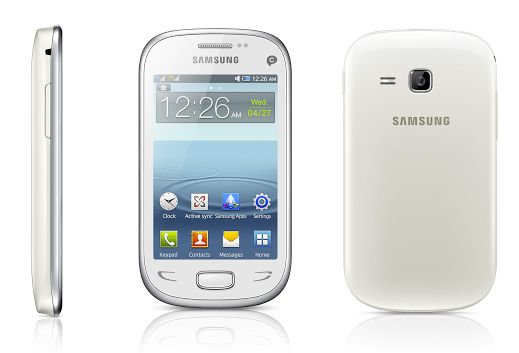Samsung Takes On Nokia With REX, A Budget Phone Line For Emerging Markets
Samsung has set its sights on acquiring some of Nokia’s share in emerging markets with a new handset range called “REX.” Based on the company’s TouchWiz interface, but not actually powered by Android, the devices are being described as “smart featurephones,” and they’re going to be competing with Nokia’s hugely popular Asha range in markets such as India.
There are four REX devices, all of which are touch-based, and they look a lot like Samsung’s Android-powered devices at first glance; they have the same interface, many of the same apps — including ChatON, Facebook, and Twitter — and a similar design.
But REX devices don’t actually run Android — they run an unknown, Java-based platform designed specifically for budget devices. There’s the REX 90, REX 80, REX 70, and REX 60. All offer dual-SIM functionality and support for four GSM/EDGE bands (850/900/1800/1900).
The high-end model, the REX 90, has a 3.5-inch display and a 3.2-megapixel rear-facing camera. The REX 60, the entry-level device, is the only one with a resistive touch display — like older touch-based devices, or the Nintendo DS — rather than a capacitive touch display.
Samsung hasn’t yet announced pricing or availability, but at a launch event in India, the company’s mobile chief, JK Shin, said the devices would target “all lifestyles and budgets.”
“REX devices are designed to seamlessly prioritise and consolidate essential mobile functions that matter most to customers across diverse markets,” he added.
As these devices prove, there’s a lot of money to be made in emerging markets, and Samsung wants a piece of Nokia’s market share. It may appear to many of us that smartphones are the future, and that nobody wants featurephones anymore. But in some markets, it’s quite the opposite.
- SourceMobile World Live



